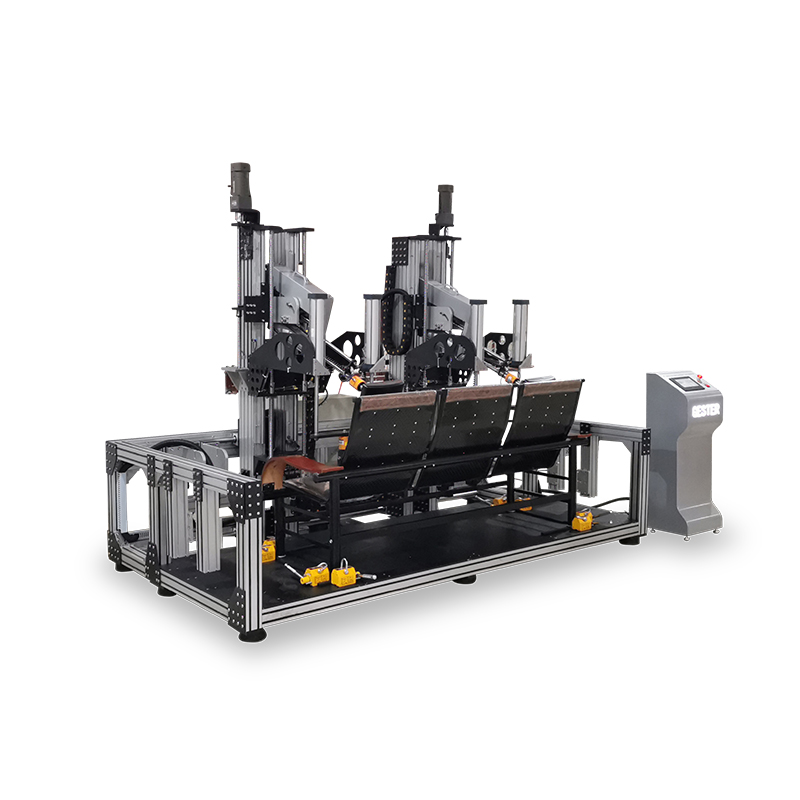What is ISO 7173 Chair Seating Testing Machine – A Complete Guide
Oct 29, 2025
What is ISO 7173 Chair Seating Testing Machine – A Complete Guide
As living standards continue to rise, furniture products play an increasingly vital role in both home and office environments. Furniture is not merely an accessory for daily life; it directly impacts the health and safety of its users. Performance testing for furniture is therefore of particular importance. This article provides a detailed analysis of ISO 7173, the internationally recognized standard for testing the strength and durability of chairs and stools.
What Is ISO 7173?
ISO 7173:2023 specifies test methods for the determination of strength and durability of the structure of all types of seating without specific regard to end use, materials, design/construction or manufacturing process. The test methods are not intended to assess the durability of upholstery materials. Test methods for the assessment of ageing, degradation, ergonomics, and electrical functions are not included.
ISO 7173:2023 does not apply to children’s highchairs, table mounted chairs, and bath seats.
Structure
load bearing parts of furniture such as the frame, seat, backrest and arm supports and suspension.
extension of the seat area intended to support the legs of the user
Note 1 to entry: A legrest can or cannot be permanently attached to the structure of the item of seating, and may
not be suitable for use as an item of seating itself.
extension of the seat area, whether attached or not to the structure of the item of seating, intended to support the feet of the user
swivelling chair, with or without arm rests, for use by one adult in the office (for example working with a computer), whose upper part, which includes the seat and backrest, is supported on a single column
and can rotate in the horizontal plane and is at least adjustable in height.
element that supports the back of the user higher than 200 mm above the seat loading point
part of the seating able to support the arms of the user when seated, 100 mm or higher above the height of the seat loading point.
horizontal distance along the armrest within an envelope down from the top of the armrest that is 20 mm deep.
unit with a seating surface wider/longer than 1 100 mm
item of seating intended for reclined posture with at least one backrest position such that backrest angle is 45 degrees or less to the horizontal, and a leg rest which is an integral part of the product and
intended to support the full body weight of a user
Testing equipment compliant with ISO 7173
Chair Seating and Back Tester tests the strength and durability of the seats and backrests by simulating the daily use loading of the seat.
The Chair Testing Machine is equipped with two drive devices, which can be individually controlled to repeatedly load the test points of the seat. Through different parameter settings, the machine can do following test on the seat:
1. Seat and back static load test.
2. Seat and back durability test.
3. Seat front edge static load and durability test;
4. Horizontal forward static loading test for backrest.
5. Headrest static load test.
6. Legs forward static load test.
7. Legs lateral static load test.
If the customer additionally purchases the GT-LB01-7 impact hammer for the machine, the following tests can be added: Backrest impact test, armrest impact test.

Feature of Chair Seating and Back Testing Machine
1. The main structure of the Chair Seating and Back Testing Machine is made of aluminum, beautiful and easy to maintain.
2. Servo proportional valve and air cylinder drive, the test loading control is more accurate, and the noise is even smaller.
3. PLC touch screen control makes the operation more convenient.
4. In addition, the Chair Seating and Back Testing Machine loading device using electric control movements, more extensive test space.
Meets other standards
EN 1728-2012 Section 6.4, 6.5, 6.7, 6.12, 6.15, 6.16, 6.17, 7.3, 7.4,7.9, 8.2, 8.4.1,8.5(6.25, 6.26 optional accessories)
EN581-2-2015 (corresponding with EN1728-2012),
EN1335-3 -2009 Section 7.2.1, 7.2.2, 7.3.1
EN 1729-2-2012 Section 5.3.2, 5.3.3, 5.3.5, 5.3.6, (5.3.8 need the optional accessories)
ISO 7173-1989 Section 7.1, 7.2, 7.3, 7.5, 7.6, 7.7, 7.8, (7.11,7.12 need the optional accessories)
GB/T 10357.3 -2013 Section 4.3, 4.4,4.7,4.8,4.10,4.11, (4.13,4.14 need the optional accessories)
BIFMA X5.1 - 2011 Section 5,6,18 , (10,15,16 need the optional accessories)
EN 16139-2013 (corresponding with EN1728-2012)
BS5459-2-2000 Section A5.1 (A5.3, A7.4 need the optional accessories)
QB/T 2280-2007 Section 6.6.4, 6.6.9 (6.6.10, 6.6.11need the optional accessories)
